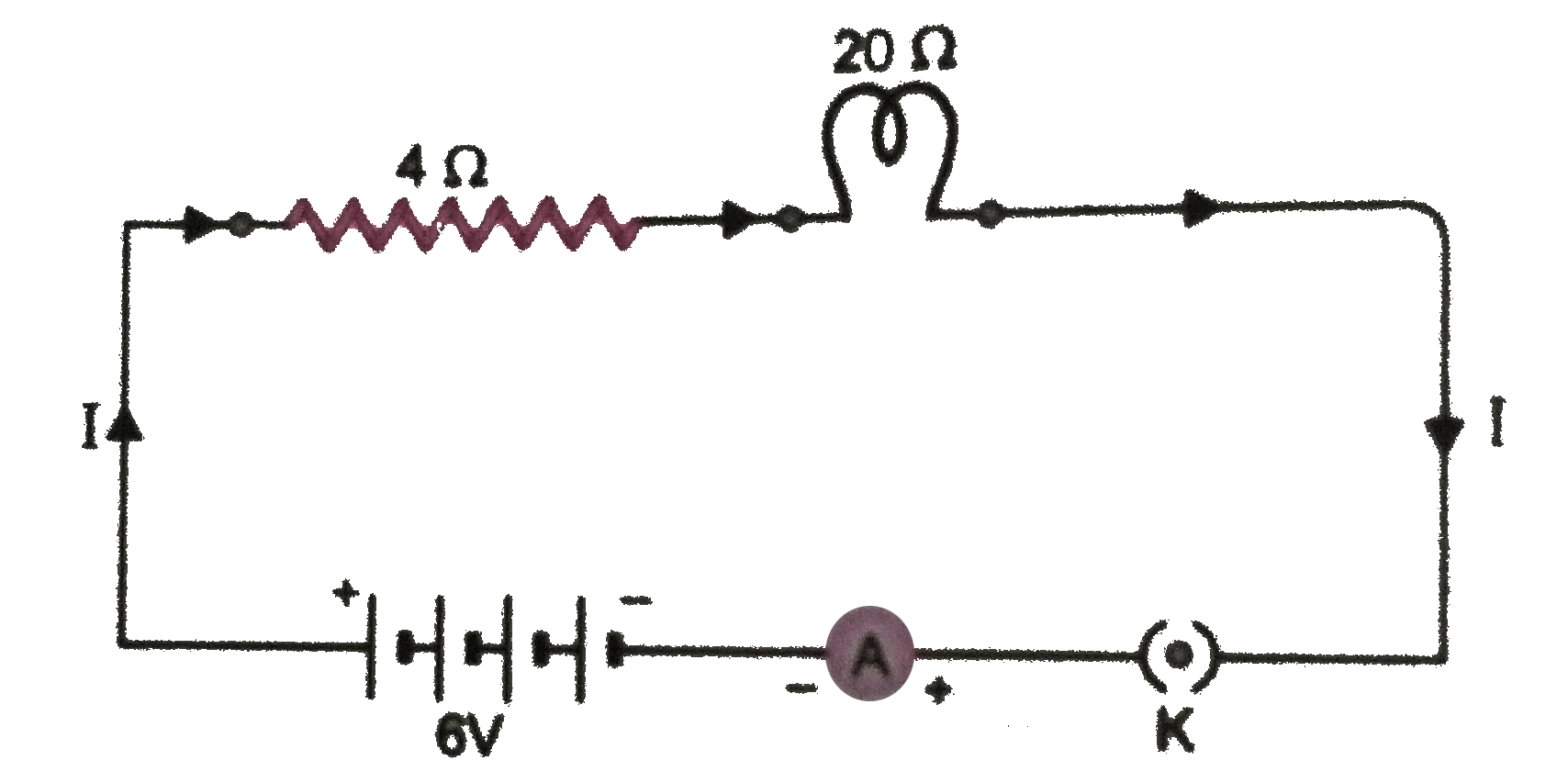An electric lamp,whose resistance is 20Ω and a conductor of 4Ω resistance are connected to a 6V battery as shown in the figure.calculate (a) total resistance of the circuit(b) the current through the circuit (c) the p.d.across the electric lamp and conductor.Solution in Punjabi
Step by step video & image solution for An electric lamp,whose resistance is 20Omega and a conductor of 4Omega resistance are connected to a 6V battery as shown in the figure.calculate (a) total resistance of the circuit(b) the current through the circuit (c) the p.d.across the electric lamp and conductor. by Physics experts to help you in doubts & scoring excellent marks in Class 10 exams.
Updated on:21/07/2023Topper's Solved these Questions
Similar Questions
Define the principal focus of concave mirror.
View SolutionSuppose a 6-volt battery is connected across lamp whose resistance is 20Ω through a variable resistor as shown in (Fig. 3.11). If the current in the circuit is 0.25A, calculate the value of the resistance from the resistor which must be used ?
 .
.
View SolutionAn electric lamp, whose resistance is 20Ω and a conductor of 4Ω resistance are connected to a 6V battery as shown in (Fig. 3.18) Calculate.
(a) the total resistance of the circuit,
(b) the current through the circuit, and
( c) the potential difference across the electric lamp and the conductor.
 .
.
View Solutionएक विघुत लैम्प जिसका प्रतिरोध 20 है, तथा एक 4Ω प्रतिरोध का चालक 6 V की बैटरी से चित्र 12.9 में दिखाए अनुसार सयोजित हैं। a) परिपथ का कुल प्रतिरोध, b) परिपथ में प्रवाहित विघुत धारा तथा c) विघुत लैम्प तथा चालक के सिरों के बीच विभान्तर परिकलित कीजिये।

View SolutionAs electric lamp and a conductor of resistance 4 Omega are connected in series to a 6 V battery. The current drawn by the lamp is 0.25 A. Find the resistance of the electric lamp.
View Solutionयदि 4 V की एक बैटरी 4Ω प्रतिरोध वाले लैंप से जुड़ी हो, तो लैंप से प्रवाहित धारा होगी
View SolutionIn an electric circuit, potential difference across a lamp is 20 V and current through the lamp is 0.5A. The resistance of the lamp is
View Solutionएक विधुत लैम्प जिसका प्रतिरोध 20 है तथा एक 4Ω प्रतिरोध का चालक श्रेणी क्रम में 6V की बैटरी से अनुसार संयोजित है | परिपथ में प्रवाहित विधुत धारा परिकलित कीजिए।
View SolutionAn electric lamp, whose resistance is 20 Omega , and a conductor of 4 Omega resistance are connected to a 6 V battery (Fig. 12.9). Calculate (a) the total resistance of the circuit, (b) the current through the circuit, and (c) the potential difference across the electric lamp and conductor.
View SolutionAn electric lamp whose resistance is 8 Omega and a conductor of 2 Omega resistance are connected in series to a 5 volt battery . Calculate( a) the total resistance of the circuit (b) the current through the circuit (c) the potential difference across the electric lamp and the conductor?
View SolutionAn electric lamp, whose resistance is 20Ω and a conductor of 4Ω resistance are connected to a 6V battery as shown in (Fig. 3.18) Calculate.
(a) the total resistance of the circuit,
(b) the current through the circuit, and
( c) the potential difference across the electric lamp and the conductor.
 .
.
View SolutionAn electric lamp of 24 Ω and a conductor of 6 Ω are connected in parallel to a 12 V battery. Calculate :
(i) Total resistance
(ii) Total current in the circuit
Potential difference across the conductor.
View SolutionAs electric lamp and a conductor of resistance 4 Omega are connected in series to a 6 V battery. The current drawn by the lamp is 0.25 A. Find the resistance of the electric lamp.
View SolutionAn electric lamp of resistance 2 Omega and a conductor of resistance 4 Omega are connected to a 6 V Battery as shown in the circuit. Calculate: (a) the totak resistance of the circuit, (b) the current through the circuit, (c) the potential difference across the (i) electric lamp and (ii) conductor, and (d) power of the lamp.
View SolutionAn electric lamp, whose resistance is 20 Omega , and a conductor of 4 Omega resistance are connected to a 6 V battery (see figure). Calculate (a) the total resistance of the circuit, (b) the current through the circuit, and (c ) the potential difference across the electric lamp and conductor.
View Solution
